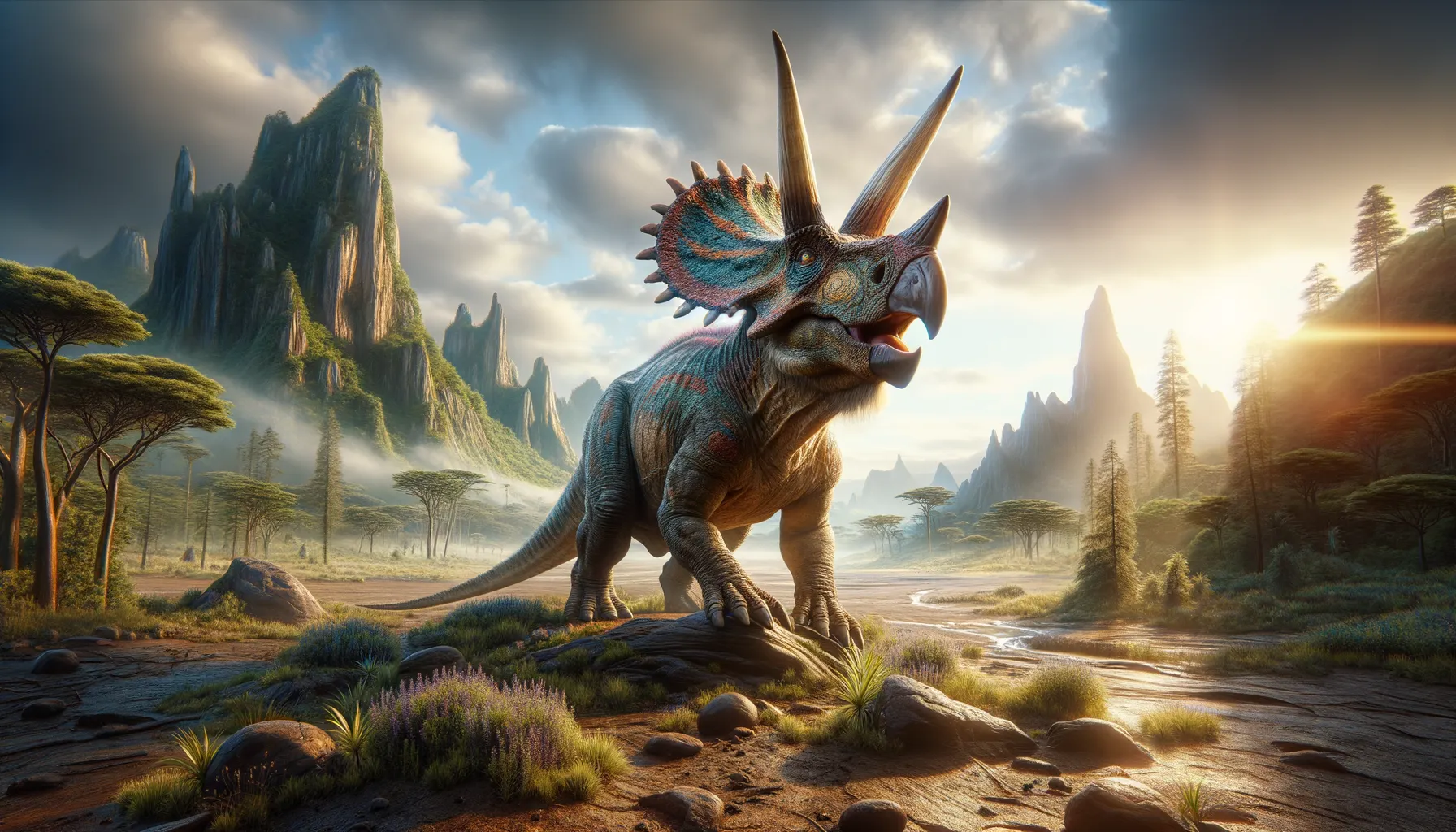
Mojoceratops
The horned spotlight of the late Cretaceous.
Period
Cretaceous
Length
About 5.5 to 6 meters long.
Height
Approximately 1.8 meters at the shoulder.
Weight
Around 900 to 1300 kilograms.
Mojoceratops was a dinosaur known for its distinctive frill and horns, resembling a rhinoceros in form. This herbivore roamed North America during the Late Cretaceous period. The Mojoceratops is noted for its vibrant and unique skull features, which may have played a role in display or species recognition. Its fossil remains provide valuable insights into the diversity of horned dinosaurs and their environments.
Diet
Mojoceratops was a herbivore, which means it fed on plants. It likely consumed ferns, cycads, and other low-lying vegetation available in its environment.
Hunting
Being a herbivore, Mojoceratops did not hunt for food but instead grazed. It used its beak-shaped mouth to cut through tough plant material.
Environmental challenges
Mojoceratops faced various environmental challenges including climate changes and shifts in vegetation patterns. Predation was a constant threat, as larger carnivorous dinosaurs roamed its habitat. Water scarcity during dry seasons could also pose challenges for its survival.
Speed
Mojoceratops was slow, with limited mobility.
Lifespan
Estimated to live around 10 to 20 years.
First discovery
Discovered in 2010 in Alberta, Canada.
Fun Facts
- Mojoceratops lived around 75 million years ago during the Late Cretaceous period.
- It was a herbivorous dinosaur that belonged to the ceratopsian family, known for their horned faces.
- Mojoceratops is famous for its elaborate, heart-shaped frill on the back of its head.
- The name 'Mojoceratops' cleverly combines the word 'mojo,' which means magic charm, with 'ceratops,' meaning horned face.
- This dinosaur was discovered in the rich fossil beds of Alberta, Canada.
- Mojoceratops was relatively small compared to some other ceratopsians, estimated to be around 20 feet long.
- The discovery of Mojoceratops helped scientists learn more about the diversity of horned dinosaurs.
Growth and Development
Mojoceratops likely hatched from eggs, growing steadily throughout its life. Juveniles would be more vulnerable to predators and environmental changes. As it matured, it developed the distinct frill and horns that are characteristic of its species.
Habitat
Mojoceratops lived in what is now North America, believed to be a mix of forests and open plains. These areas provided ample vegetation for feeding and allowed for movement and grazing. The changing Cretaceous landscapes with rivers and coastal features influenced its habitat choices.
Interaction with other species
Mojoceratops would have interacted with other herbivorous dinosaur species, perhaps competing for food resources. Its main interactions with carnivorous species would be as prey. It may have used its horns and frill for defense against predators.
Natural lifespan
Mojoceratops may have naturally lived around 10 to 20 years.
Reproduction
Mojoceratops reproduced by laying eggs, as did other ceratopsians. After laying eggs, parental care might include guarding the nest from predators. The nesting sites helped eggs incubate until hatching.
Social behaviour
Mojoceratops may have lived in small groups or herds, which could offer protection against predators. Social structures might involve displays and interactions signaled by frills and horns to establish dominance or attract mates.
Fossil locations
The fossils of Mojoceratops have been primarily found in Alberta, Canada. These finds contribute significantly to understanding the diversity of ceratopsians in North America. Additional potential discoveries could further illuminate its geographic range and lifestyle.
